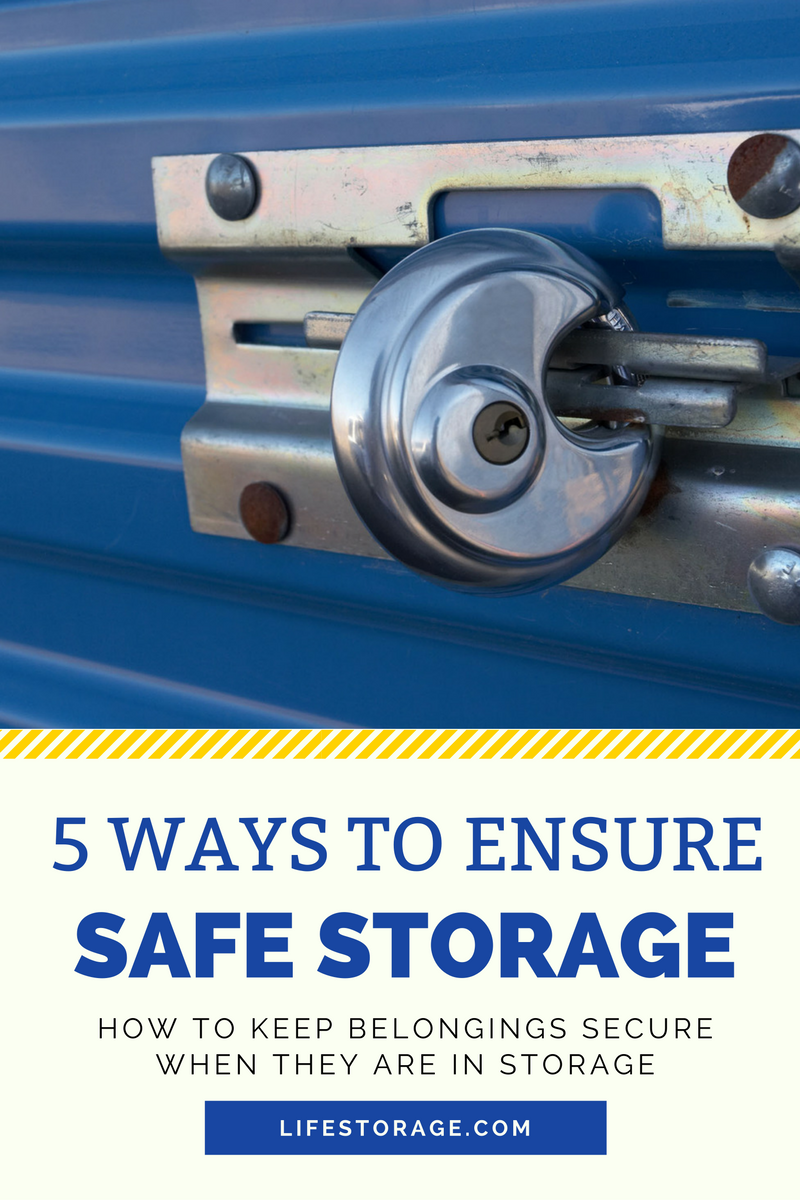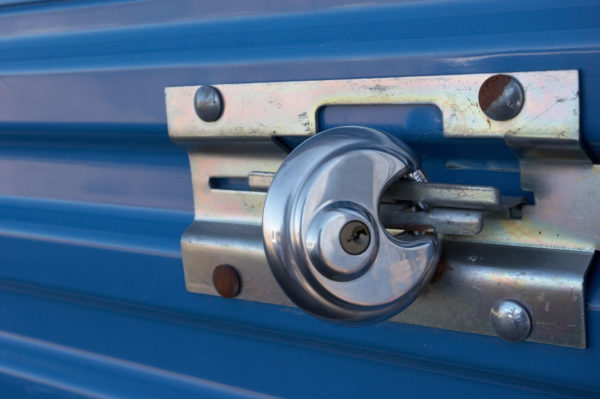Updated 11/23/16 from an article originally published 1/29/2014.

People rent self storage for different reasons. Some want more room in their houses or apartments. Others move and need a place to keep their belongings during the transition.
Whatever the case may be, keeping your possessions safe is one of the most important factors when selecting a storage facility.
When shopping for storage, first determine if you require a climate controlled environment to your store valuables and keepsakes.
Next, don’t forget to consider safety and security. You can pay a monthly bill for storage, but peace of mind is priceless! Let’s look at five ways to make sure your stuff stays safe when in storage.
Smart Storage: Keeping Your Possessions Secure
1. Search for a Facility with Layers of Protection
There are several security-related items you should look for at any facility. Search the perimeter for strong gate or fence surrounding the property. This is the initial layer of security and keeps out anyone who isn’t working or renting at the storage location. Electronic key codes for exit and entry are excellent as well.
The next layer of protection is video surveillance. Is there a video record of the facility? If the worst happens, video can be extremely helpful in making sure that the intruder is identified and apprehended.
Also, is an employee on the grounds 24 hours a day? The facility does not need to be open all of the time, but having a physical presence can help deter potential shenanigans.
2. Environmental Protection is Important
If you’re renting indoor storage, it is very important to make sure that your units are sealed and secure to prevent damage from the elements. If you are able to opt for climate controlled storage, there’s less risk of damage from factors like the weather.
Without proper protection, your items are in danger of suffering from exposures — floods, fire, rust, and corrosion. If you notice your furniture becoming cracked or split, yellowing metals, or the growth of mold or mildew, start asking questions about whether you should change units or facilities.
3. Purchase a Solid Lock
It’s important to take security into your own hands when you can. A lock may be the most obvious security need, but some people do not take their lock quality seriously enough. Some storage facilities may expect you to provide your own lock. Locks come in all sorts of shapes and sizes. Make sure you are purchasing a quality lock, one that cannot be cut by bolt or wire cutters. This is often the first and best line of defense to ensure that your valuables are safe.
4. Don’t Skimp on Insurance
Check and see if your facility offers insurance. If so, what does the policy specifically cover? If it is not extensive, sometimes your homeowner’s or renter’s insurance will cover off-site items. These are important to have in the event that your security is breached or items are damaged.
5. Keep a Record of Items
Keep a record of everything located in your storage facility (a little map comes in handy, too). Take down serial numbers of electronic equipment. Make a list and record each item’s value. This will help you stay organized but will also be an important component of any insurance claim.
Life Storage is committed to providing a secure and comfortable storage presence across America. Check out a storage facility near you to learn more.
